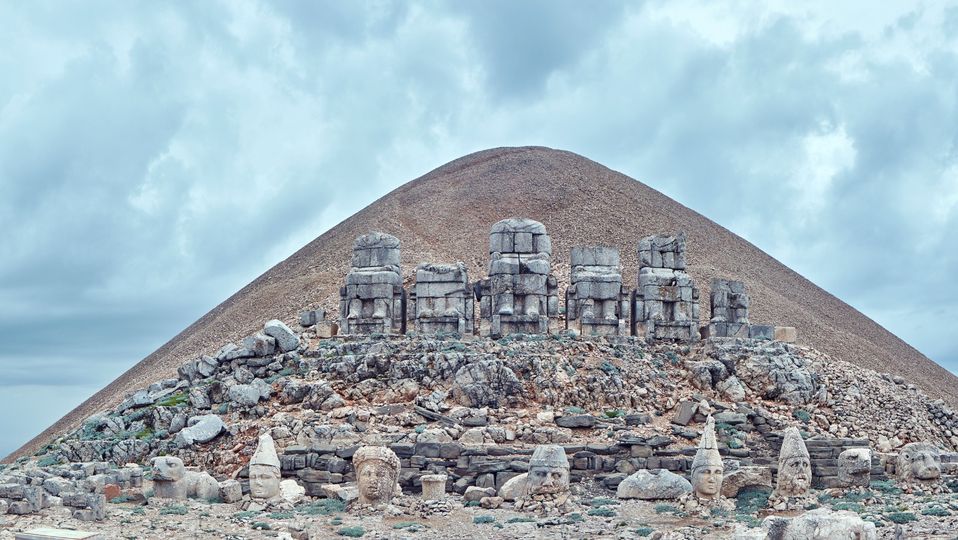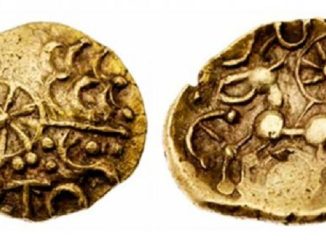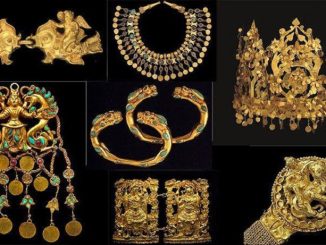Perched atop the majestic Mount Nemrut in Turkey, a silent testament to a bygone era awaits discovery — the statues flanking the tomb-sanctuary of Commagene King Antiochus I Theos. Erected in 62 BC, these colossal statues, standing at 8–9 meters (26–30 feet) high, depict the king himself, alongside majestic lions, eagles, and a pantheon of Greek, Armenian, and Iranian gods. Join us on a journey through time as we unravel the mysteries surrounding these ancient statues and explore the rich history of Mount Nemrut.

A Royal Tribute: Commissioned by King Antiochus I Theos, the statues surrounding the tomb-sanctuary atop Mount Nemrut serve as a grand tribute to the king’s divine lineage and imperial power. Carved with exquisite detail and precision, the statues reflect the artistic and architectural brilliance of the Commagene civilization. Positioned at the summit of the mountain, overlooking the surrounding landscape, they stand as eternal guardians of the king’s legacy, symbolizing his enduring presence in the annals of history.
Guardians of the Gods: In addition to the monumental figure of King Antiochus I, the statues at Mount Nemrut also include representations of divine beings, such as lions and eagles, as well as various Greek, Armenian, and Iranian gods. These deities, carved in stone with imposing grandeur, evoke a sense of awe and reverence, inviting contemplation of the ancient beliefs and rituals of the Commagene people. As guardians of the gods, they stand watch over the sacred sanctuary, preserving its sanctity for eternity.
Legacy of Commagene Civilization: The statues of Mount Nemrut are not only a testament to the power and grandeur of King Antiochus I but also a reflection of the rich cultural heritage of the Commagene civilization. Located at the crossroads of major ancient civilizations, including Persia, Greece, and Rome, Commagene flourished as a center of trade, culture, and religion. The statues of Mount Nemrut, with their eclectic blend of artistic styles and religious symbolism, serve as a microcosm of the diverse influences that shaped the region’s identity.
Preserving Ancient Heritage: As custodians of Mount Nemrut’s ancient legacy, it is our responsibility to ensure the preservation and protection of these monumental statues for future generations. The site faces threats from erosion, weathering, and human activity, making conservation efforts imperative. Through ongoing research, monitoring, and conservation initiatives, we can safeguard the statues of Mount Nemrut and ensure that they continue to inspire awe and wonder for centuries to come.
Conclusion:
As we conclude our exploration of the statues of Mount Nemrut, let us marvel at the enduring legacy of Commagene civilization and the artistic brilliance of its craftsmen. From the imposing figure of King Antiochus I to the majestic lions and eagles, each statue tells a story of power, devotion, and cultural exchange. As we continue to uncover the secrets of Mount Nemrut, let us also reflect on the importance of preserving our ancient heritage and honoring the memory of those who came before us.
Ancient Discoveries: The statues of Mount Nemrut are just one of many ancient discoveries that continue to captivate and inspire us with their beauty and significance. From the pyramids of Egypt to the ruins of Machu Picchu, the world is replete with treasures waiting to be discovered. Each artifact, each monument, tells a story of human ingenuity and perseverance, reminding us of the rich tapestry of our shared history. As we continue to explore the ancient world, let us remain vigilant in our efforts to preserve and protect these priceless artifacts for the benefit of all.


